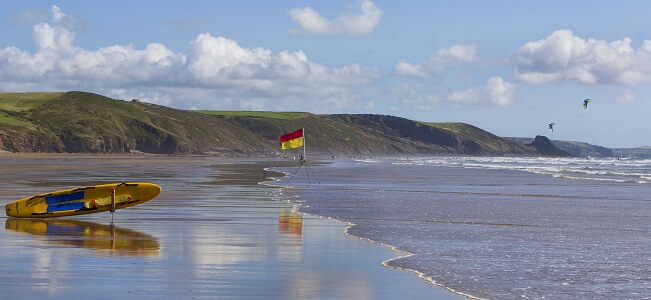
The British coastline is blessed with stunning beaches, seaside towns and miles of coastal walking paths. With more of us choosing to holiday at home this year due to travel restrictions, the great British tradition of visiting the seaside is back with a boom!
WCF Chandlers have been servicing coastal towns and communities across East Anglia, Lincolnshire and Yorkshire with home heating oil and commercial fuels since 1935, we pride ourselves on providing truly outstanding service to all our customers, regardless of size. As an established, private company, partly owned by its employees, we are proud to not only support these coastal communities with their fuel needs but also provide employment opportunities for locals.
Whilst Britain’s coastline is full of stunning seaside spots for all the family to enjoy, there are also many hidden dangers.
Always obey instructions from lifeguards and encourage your children to look for the coloured flags.
Red and Yellow Flags – The area between these flags are patrolled by lifeguards and this is the safest place to swim.
Black and white chequered flags -The areas between these flags are for water sports, you should not swim in these areas.
An orange windsock – signifies a strong wind. The RNLI says inflatables should not be used in these conditions.
Red Flag – This flag indicated that it is dangerous to go in the water.
Check the local tide times before you set off to the beach, making sure that you are aware of both the high and low tide times to avoid getting caught out. You can find out more about tide times metoffice.gov.uk/weather/guides/coast-and-sea/beach-and-tide-times
Rip currents are a strong, localised, and narrow current of water that moves directly away from the shore out to deeper water, like a river running from the shoreline out to sea.
Rip currents can be difficult to spot but they may differ in colour from the surrounding water; it is often more opaque, cloudier, or muddier, and so, depending on the angle of the sun, the rip may show as darker or lighter than the surrounding water. The surface of the rip sometimes looks foamy because the current is carrying foam from the surf out to open water, it may also be carrying beach debris, such as seaweed or other floating objects on its surface.
The best way to avoid rips is to choose a lifeguarded beach and always swim between the red and yellow flags. The RNLI advise those caught in a rip current to stay calm and conserve energy.
Stay close, remember that even shallow water can quickly knock you off your feet – stay within arm’s reach of little ones whenever you’re in or near the water.
Apply a high factor sun cream before heading to the beach, apply it throughout the day and after swimming. Whilst sunscreen will offer some protection, covering yourself and your little one with loose clothing and a wide-brimmed hat will offer better protection than sunscreen alone.
It can be hard to find much shade at the beach, so bring something you can use to create your own, such as tents or sunshades. Encourage little ones to play in the shade between 11 am-3 pm when the sun is at its strongest.
Make sure you have access to drinks all day – remember that sun and wind can dehydrate you quickly at the beach, even on colder days.
And finally, don't go in the sea after drinking alcohol!
With our domestic services to homeowners, bulk fuel solutions for farms and businesses, and local village buying groups with thousands of members across Lincolnshire, Nottinghamshire, Yorkshire, Norfolk, and the East Midlands, WCF Chandlers ensures you never run out of essential fuels.
Whether you need home heating oil, agricultural diesel, or commercial fuels, we've got you covered. Across all our depots, we are committed to providing you with exceptional value and exceeding expectations with our award-winning service. Whether you're looking for affordable heating oil for your boiler, or bulk fuel supplies for your farm or business, we have the right solution for you. We also offer local Village Buying Groups, allowing you to benefit from more competitive prices by grouping deliveries in your area. With thousands of members, our buying groups reduce distribution costs, and we pass those savings directly to you.
We can even manage your fuel levels with WCF Chandlers Tank Smart Monitoring service. Plus, if you want to spread the cost of your domestic heating oil, explore our helpful Payment Plans, where we can offer you the best available price.